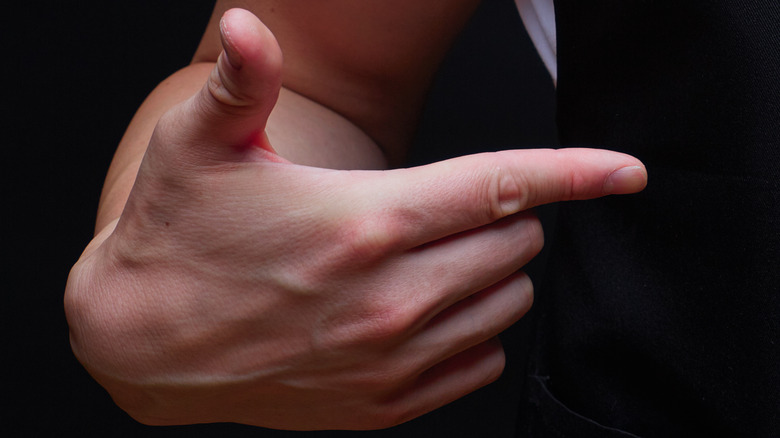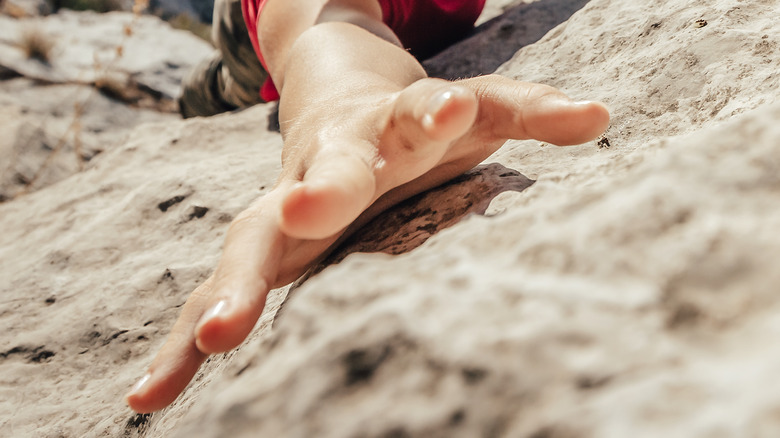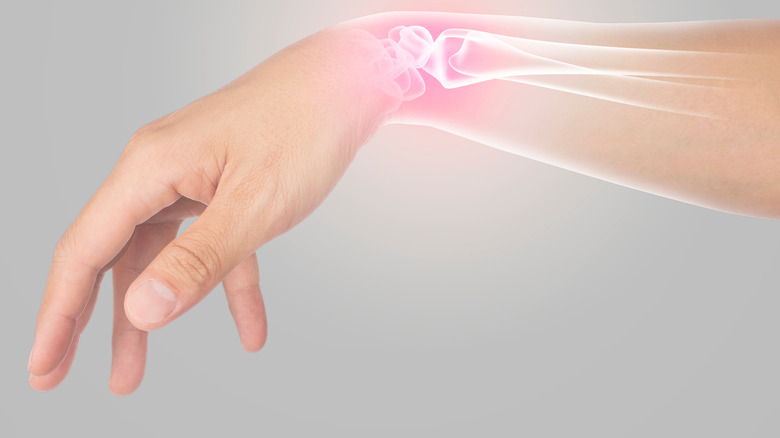The Scientific Reason Why You Can't Actually Strengthen Finger Muscles
Behind every myth, there's a fistful of facts waiting to burst through and shatter it into a million little pieces. Ideas or concepts we take for granted are often nothing more than hastily assumed truths that are actually false. For instance, have you ever been told by a personal trainer or a rock climbing aficionado that strengthening your fingers should be a priority? Well, the study of the human anatomy throws up a big middle finger to that statement.
Hand strength can boost or plummet like any other system of muscles within your body, but how big of a role do your fingers really play in that equation? Some of us need a firmer grip on the truth because the answer could very well save you a significant amount of time in the gym spent trying to bulk up your digits. But, your fingers do not actually contain any muscles, according to MedicineNet.
Bones and ligaments
So if your fingers don't have muscles, what do they have? In place of muscles, each finger contains ligaments, tendons, and three separate bones. These bones are named in order based on their proximity to the palm: proximal phalange (closest), middle phalange (second closest), and distal phalange (farthest). In the same order, the three knuckles that connect the bones are the metacarpophalangeal joint, which is the largest and connects the finger to the palm, then there's the proximal inter-phalangeal joint, and finally the distal inter-phalangeal joint (via MedicineNet).
The primary purpose of ligaments is to connect bone to bone, and tendons connect muscle to bone; but if there are no muscles in your fingers, what purpose do the tendons serve? Well, just because your fingers don't have muscles doesn't mean that muscles don't play a role in their functionality. The muscles that are responsible for your finger movement are located both in the palm and forearm, so it's the tendons' job to connect finger bones to said muscles.
The muscles in your palm and forearm
Intrinsic muscles are located in the palm and extrinsic muscles are in the forearm. These muscles are divided into two groups: flexors and extensors. The former are muscles that work to close the hand and the latter are those meant to open it. First and foremost, let's deal with the forearm — or extrinsic muscles. There are 18 of these located in the forearm and there are two groups in the flexor category (those muscles that close the hand): the flexor digitorum superficialis and the flexor digitorum profundus. The three main types of extrinsic extensors (muscles that open the hand) are the extensor digitorum, the extensor indicis, and the extensor digiti minimi (per Today I Found Out).
Intrinsic muscles, on the other hand, lay in the palm, and comprise four main categories: interossei, thenar, hypothenar, and lumbrical muscle. These are the palm flexor and extensor muscles that tendons in your fingers connect themselves to, none of which are located in the fingers themselves. So if you're looking to up your arm wrestling game or climb Mt. Everest in record time, you might want to focus on the hands and forearms instead of the fingers (via Today I Found Out).


